Stay Informed with Our Landscaping Tips
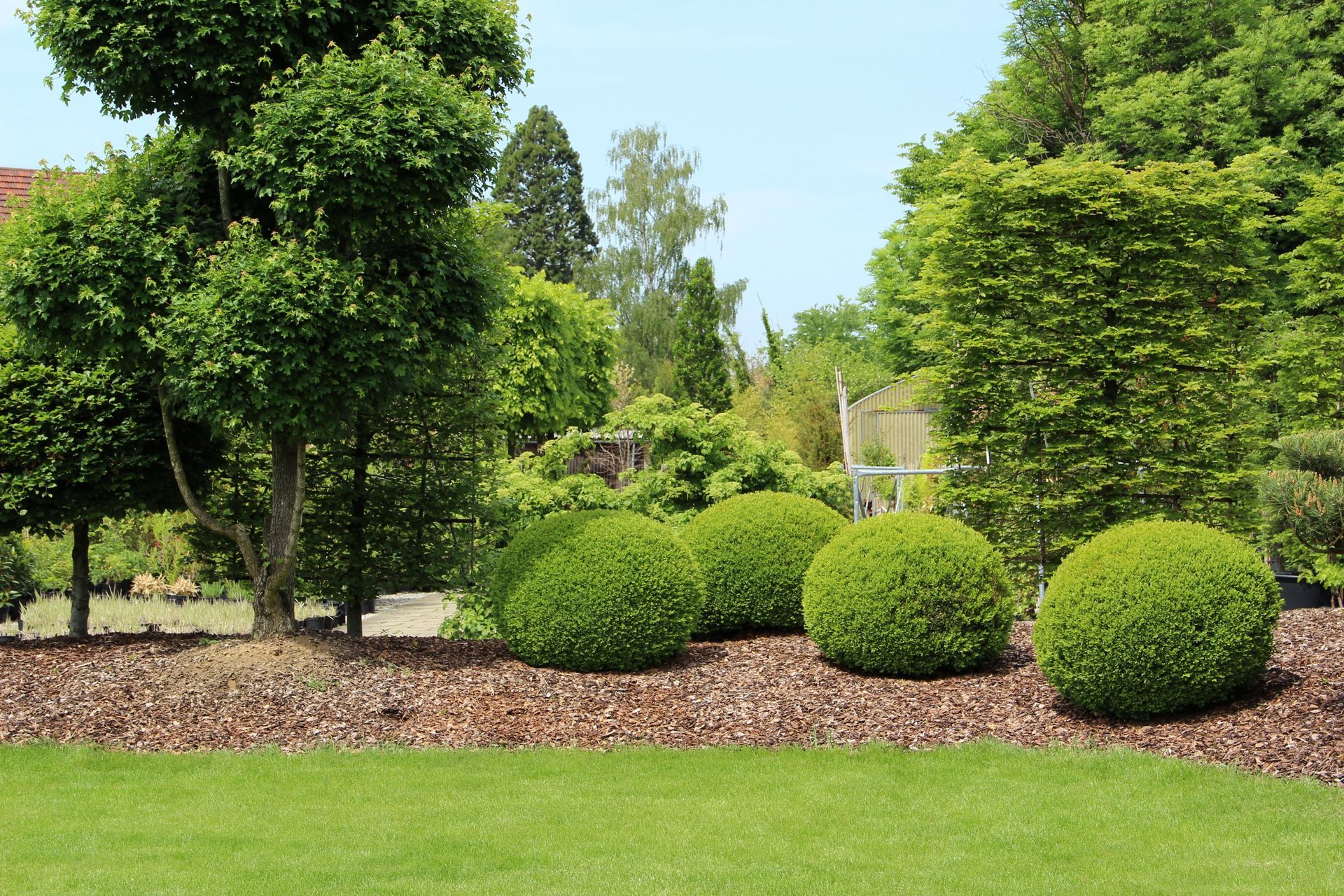
Fall isn’t just about preparing your lawn for winter; it's also a crucial time for tree and shrub maintenance. As the temperatures drop and trees shed their leaves, it’s the perfect opportunity to tend to your landscape’s woody plants. Here’s why fall is the ideal season for tree and shrub care and what you should focus on. *1. Pruning for Health and Shape: Pruning trees and shrubs in the fall helps remove dead or diseased branches before the harsh winter weather sets in. It also promotes better air circulation and reduces the risk of pest infestations. Focus on removing any damaged or crossing branches to enhance the structure and health of your plants. *2. Mulching for Protection: Applying a layer of mulch around the base of trees and shrubs in the fall helps insulate the root zone, preventing freeze-thaw cycles that can damage roots. Mulch also retains soil moisture, reducing stress on plants during dry winter months. *3. Planting New Trees and Shrubs: Fall is an excellent time to plant new trees and shrubs, as the cooler temperatures and ample rainfall help establish strong root systems. The soil is still warm enough to encourage root growth, but not too hot to stress new plants. *4. Checking for Pests and Diseases: Before winter sets in, inspect your trees and shrubs for signs of pests or diseases. Early detection and treatment can prevent problems from worsening and ensure your plants come back strong in the spring. *5. Preparing for Winter Weather: Protect your plants from winter damage by wrapping vulnerable shrubs or young trees with burlap or other protective coverings. This shielding helps prevent damage from snow, ice, and extreme temperatures. Conclusion: Taking the time for fall tree and shrub maintenance can make a significant difference in the health and appearance of your landscape. For expert care and advice tailored to your specific needs, reach out to Great-Greens. Our team is dedicated to helping you achieve a beautiful and thriving landscape throughout every season!
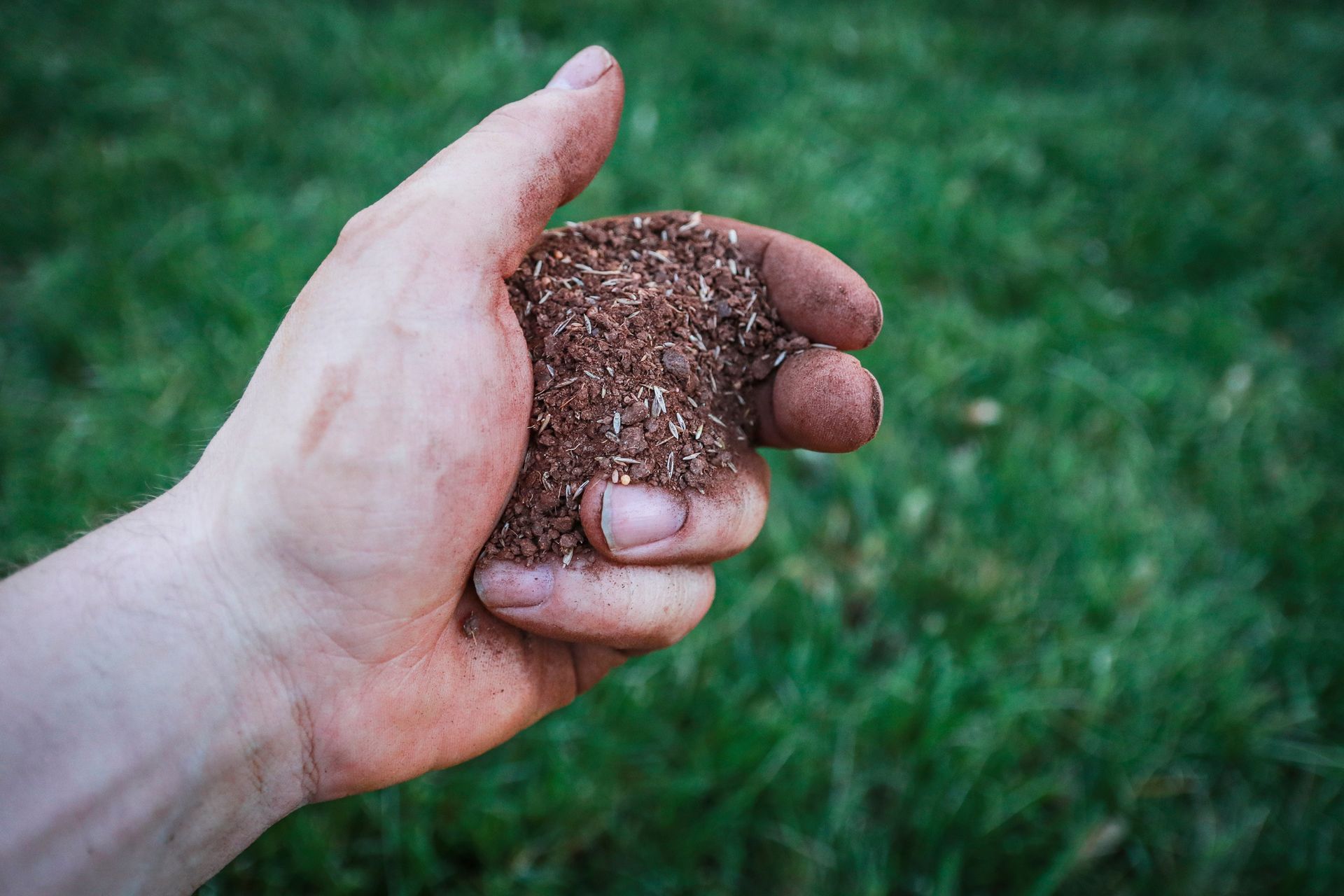
As fall sets in and the growing season winds down, many homeowners look for ways to enhance the health and appearance of their lawns. One of the most effective techniques for rejuvenating your turf is overseeding. This simple yet powerful practice can help you achieve a lush, green lawn that's the envy of the neighborhood. Here’s why overseeding is beneficial and how you can make the most of it. *1. Improves Lawn Density: Overseeding involves spreading grass seed over your existing lawn to improve its density. If your lawn has bare spots, thinning areas, or is generally lacking in fullness, overseeding can fill in those gaps and create a more uniform appearance. A denser lawn not only looks better but also helps crowd out weeds, reducing the need for herbicides. *2. Enhances Lawn Health: By introducing new seed varieties, overseeding can enhance the overall health of your lawn. For instance, you can choose seeds that are more drought-resistant, disease-resistant, or better suited to your specific soil and climate conditions. This diversity helps your lawn adapt to changing conditions and remain resilient throughout the year. *3. Promotes Faster Recovery: If your lawn has suffered from stress due to summer heat, heavy foot traffic, or pest problems, overseeding can speed up its recovery. New grass seedlings can fill in damaged areas and help your lawn bounce back more quickly, leading to a healthier and more robust turf. *4. Reduces Soil Erosion: A thicker lawn created through overseeding provides better ground coverage, which can help reduce soil erosion. This is especially important on sloped areas or in regions prone to heavy rains. By stabilizing the soil, you can prevent runoff and protect your landscape from erosion. *5. Extends the Growing Season: Fall is an excellent time for overseeding because the cooler temperatures and increased moisture create ideal conditions for seed germination. Overseeding in the fall allows the new grass to establish roots before winter, so when spring arrives, you'll have a head start on achieving a vibrant, green lawn. How to Overseed Your Lawn: Prepare Your Lawn: Start by mowing your lawn to a shorter height and raking up any debris. This helps the seed make good contact with the soil. For best results, consider aerating your lawn before overseeding to improve seed-to-soil contact. Choose the Right Seed: Select a grass seed blend that suits your local climate and soil conditions. Consult with a local nursery or landscaping professional if you’re unsure which seed is best for your lawn. Spread the Seed: Use a broadcast spreader to evenly distribute the seed over your lawn. Follow the recommended seeding rate on the seed packaging for optimal results. Water Regularly: Keep the soil consistently moist to encourage seed germination. Water lightly but frequently until the new grass is established. Avoid Heavy Traffic: Limit foot traffic on the newly seeded areas to give the grass the best chance to grow and establish itself. Conclusion: Overseeding is a valuable practice for maintaining and improving the health and appearance of your lawn. By adding new grass seed to your existing turf, you can achieve a lush, dense, and resilient lawn that thrives year-round. For expert assistance with overseeding and other lawn care needs, contact Great-Greens. Our team is dedicated to helping you achieve a beautiful, healthy lawn that enhances your outdoor space.

As the vibrant colors of fall begin to grace our landscapes, it’s the perfect time to focus on getting your lawn ready for the colder months. Proper fall maintenance not only helps your lawn look its best but also sets the stage for a healthy and lush spring. Here are our top five tips to ensure your lawn stays in peak condition through the winter. *1. Aerate Your Lawn: Fall is an ideal time for lawn aeration. Aerating helps relieve soil compaction, allowing water, nutrients, and air to reach the roots more effectively. This process enhances root development and improves overall lawn health, making it more resilient to the winter chill. *2. Fertilize with Fall-Appropriate Nutrients: Applying a high-potassium fertilizer in the fall can help strengthen your lawn's root system and improve its cold tolerance. Look for a fertilizer that's specifically designed for fall application, as it will support your lawn’s health through the winter months. *3. Rake and Remove Leaves: Accumulated leaves can block sunlight and trap moisture, leading to potential fungal problems. Regularly raking leaves not only keeps your lawn looking neat but also prevents issues that can arise from a thick layer of decomposing foliage. *4. Adjust Your Mowing Routine: As the growing season winds down, gradually lower your mower blade to a shorter setting. Keeping your grass slightly shorter in the fall reduces the risk of disease and helps prevent the formation of snow mold under heavy snow cover. *5. Plan for Winterizing Your Garden Beds: Fall is a great time to clean up garden beds, remove dead plants, and add a layer of mulch. Mulching helps insulate plant roots from extreme temperatures and reduces soil erosion. Additionally, consider planting fall bulbs to brighten up your garden come spring. Conclusion: By following these fall landscaping tips, you'll ensure that your lawn and garden are well-prepared for the winter months. For personalized advice and professional assistance, contact Great-Greens. We're here to help you maintain a healthy and beautiful landscape throughout the year!

Dreaming of a lush, green lawn without the wait? Look no further than sod installation. Sod offers an instant solution to transform your outdoor space into a verdant oasis. In this comprehensive guide, we'll explore the benefits of sod installation and provide step-by-step instructions to help you achieve a picture-perfect lawn with ease. The Benefits of Sod Installation: Sod installation offers numerous advantages over traditional seeding methods, making it a popular choice for homeowners seeking immediate results. Here are some key benefits: Instant Gratification: Unlike seeding, which requires weeks or even months for grass to establish, sod provides an instant lawn. With sod installation, you can enjoy a lush, green lawn almost immediately, enhancing your outdoor living space without the wait. Weed Control: Sod is grown from weed-free turfgrass varieties, minimizing the risk of weed infestations compared to seeding. This helps maintain a pristine lawn appearance and reduces the need for ongoing weed management. Erosion Control: Sod provides immediate erosion control, stabilizing the soil and preventing sediment runoff. This is particularly beneficial for sloped or uneven terrain where erosion can pose a challenge. Soil Health: Sod comes with a layer of mature roots and soil, promoting rapid establishment and healthy growth. This helps improve soil structure, increase organic matter content, and enhance overall soil health. Versatility: Sod can be installed virtually anywhere, from residential lawns and commercial properties to sports fields and parks. Its versatility makes it a popular choice for a wide range of landscaping projects. Step-by-Step Guide to Sod Installation: Now that we've explored the benefits of sod installation, let's dive into the step-by-step process to achieve professional results: Prepare the Soil: Begin by preparing the soil surface to ensure proper sod adhesion and root establishment. Remove any debris, rocks, or existing vegetation, and till the soil to a depth of 4-6 inches to promote root penetration. Grade the Surface: Level the soil surface using a rake or leveling tool, ensuring uniformity and proper drainage. Fill in low spots and eliminate high spots to create a smooth, even surface for sod installation. Measure and Order Sod: Measure the area to be sodded accurately, taking into account any irregularities or curved edges. Order the appropriate amount of sod based on your measurements, ensuring adequate coverage without excess waste. Install Sod: Begin laying sod along a straight edge, such as a sidewalk or driveway, to ensure a neat, uniform appearance. Stagger the sod joints like brickwork to minimize gaps and promote seamless integration. Trim and Shape: Use a sharp utility knife or sod cutter to trim the edges and shape the sod to fit irregular areas or curves. Pay attention to detail, ensuring a precise fit and professional finish. Water Thoroughly: After sod installation, water the entire area thoroughly to promote root establishment and minimize stress. Keep the sod consistently moist, watering deeply to encourage deep root growth. Maintain Regularly: Monitor the newly sodded lawn closely and adjust watering frequency as needed to keep the sod moist but not waterlogged. Avoid heavy foot traffic or mowing until the sod has fully established, typically within 2-3 weeks. Conclusion: Sod installation offers a convenient and efficient way to achieve a lush, green lawn with minimal time and effort. By following the step-by-step guide outlined in this post and investing in quality sod, you can enjoy the immediate gratification of a beautiful lawn that enhances your outdoor living experience. With proper care and maintenance, your sodded lawn will thrive for years to come, providing enjoyment and beauty for your home or property.
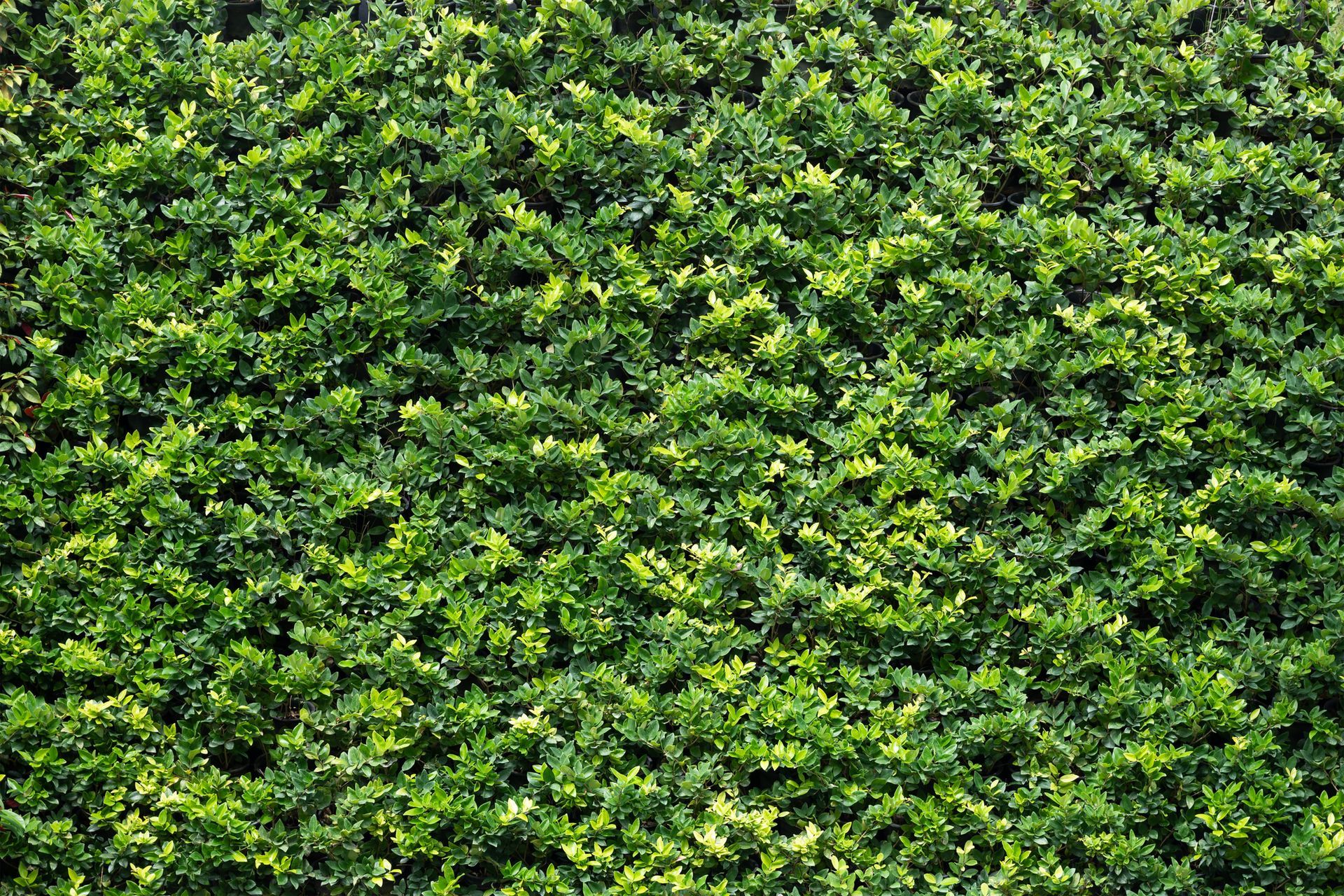
A lush, green lawn is the pride of any homeowner, but maintaining its vibrancy requires proactive care and attention. One essential practice in achieving a healthy and resilient lawn is overseeding. In this blog post, we'll delve into the benefits of overseeding and provide a step-by-step guide to help you transform your lawn into a verdant oasis. Understanding Overseeding: Overseeding involves spreading grass seed over an existing lawn to fill in bare patches, improve density, and introduce new grass varieties. This process rejuvenates the turf, enhancing its overall appearance and resilience. Here's why overseeding is crucial for maintaining a vibrant lawn: Thickens Turf: Over time, lawns can develop thin or bare areas due to factors such as foot traffic, pests, or environmental stress. Overseeding helps thicken the turf, filling in gaps and creating a dense, uniform lawn. Introduces Diversity: By overseeding with different grass varieties, you can enhance the lawn's resilience to pests, diseases, and environmental conditions. This diversity strengthens the turf's ability to withstand stress and maintain its vigor year-round. Improves Appearance: Overseeding revitalizes the lawn's color and texture, giving it a fresh, rejuvenated look. Whether you're addressing patchy areas or simply aiming to enhance overall aesthetics, overseeding can transform your lawn's appearance. Enhances Soil Health: Grass roots help to aerate and nourish the soil, promoting microbial activity and improving its structure. Overseeding contributes to soil health by stimulating root growth and increasing organic matter content. The Overseeding Process: Now that we understand the benefits of overseeding, let's explore the step-by-step process to achieve optimal results: Prepare the Lawn: Begin by mowing the existing grass to a height of 1.5 to 2 inches. Rake away any debris, thatch, or dead grass to expose the soil surface and create an ideal environment for seed germination. Select the Right Seed: Choose a high-quality grass seed blend that's well-suited to your climate, soil type, and sun exposure. Consider factors such as drought tolerance, disease resistance, and maintenance requirements when selecting the seed mix. Spread the Seed: Using a broadcast spreader or handheld spreader, evenly distribute the grass seed across the lawn surface. Aim for thorough coverage, ensuring that each area receives an adequate amount of seed for optimal germination. Apply Fertilizer and Mulch: After seeding, apply a slow-release fertilizer to provide essential nutrients for seedling growth. Additionally, applying a thin layer of mulch or compost helps retain moisture and protect the seeds from birds and erosion. Water Regularly: Keep the newly seeded areas consistently moist by watering lightly multiple times a day, especially during the first few weeks after overseeding. Avoid overwatering, as excessive moisture can promote fungal growth and seed rot. Monitor Growth and Maintenance: As the grass seed germinates and establishes, monitor its progress and adjust watering frequency as needed. Once the new grass reaches a height of 3 inches, gradually transition to a regular watering and mowing schedule. Conclusion: Overseeding is a simple yet effective way to rejuvenate and revitalize your lawn, ensuring its long-term health and beauty. By following the steps outlined in this guide and investing in quality grass seed, you can transform your lawn into a lush, green oasis that enhances your outdoor living experience. With proper care and maintenance, overseeding can rejuvenate your lawn's appearance and ensure its resilience for years to come.
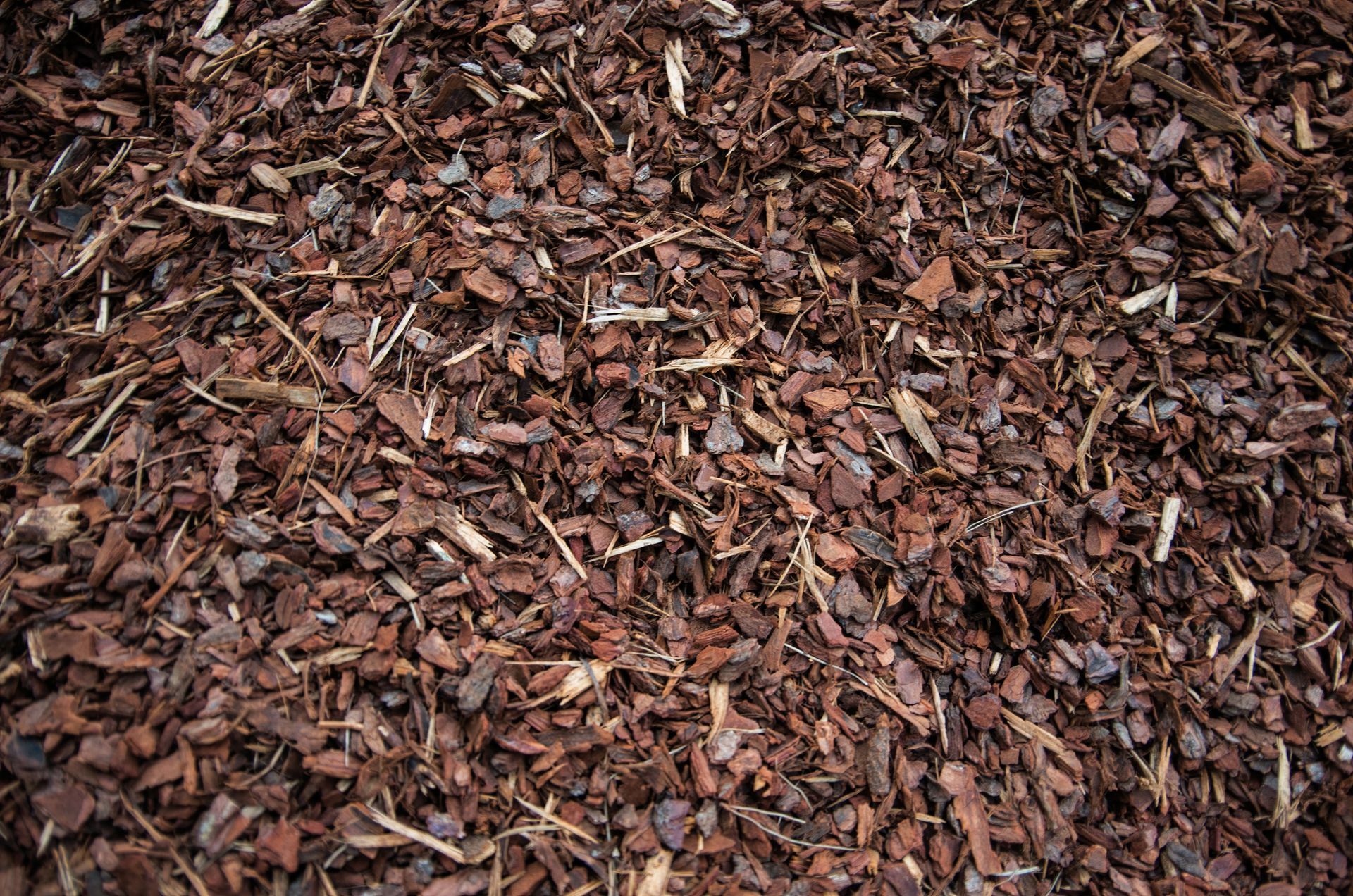
As the seasons change and your lawn transitions through various stages of growth, one practice stands out as a cornerstone of healthy lawn maintenance: mulching. Mulching isn't just about aesthetics; it's a vital component of nurturing your lawn's health and vitality. In this blog post, we'll explore the benefits of mulching and how incorporating this simple technique into your lawn care routine can yield impressive results. Why Mulching Matters: Mulch serves as a protective layer covering the soil surface around your plants and grass. Its benefits extend far beyond mere visual appeal. Here are some key reasons why mulching matters: Moisture Retention: Mulch acts as a barrier, reducing moisture evaporation from the soil. This helps to keep the root zone consistently moist, especially during hot summer months, reducing the need for frequent watering. Weed Suppression: A thick layer of mulch inhibits weed growth by blocking sunlight and preventing weed seeds from germinating. This minimizes the competition for nutrients and space, allowing your grass and plants to thrive. Soil Health: As mulch decomposes, it enriches the soil with essential nutrients, improving its structure and fertility. This creates a conducive environment for beneficial microorganisms, promoting overall soil health. Temperature Regulation: Mulch acts as insulation, protecting plant roots from extreme temperature fluctuations. In winter, it helps to retain soil warmth, while in summer, it keeps the soil cool, fostering optimal growing conditions. Choosing the Right Mulch: When it comes to selecting mulch for your lawn, there are several options to consider, each with its own set of characteristics and benefits. Some popular choices include: Organic Mulch: Made from natural materials such as wood chips, shredded bark, or compost, organic mulch enriches the soil as it decomposes. It's ideal for improving soil structure and fertility. Inorganic Mulch: Materials like gravel, stone, or rubber mulch provide long-lasting weed suppression and moisture retention. While they don't decompose, they offer excellent durability and low maintenance. Mulch Color: Consider the aesthetic appeal of mulch and how it complements your landscape design. Dark-colored mulches absorb more heat, which can be beneficial in cooler climates, while lighter-colored mulches reflect heat, keeping the soil cooler in warmer regions. Best Practices for Mulching: To maximize the benefits of mulching and ensure optimal results, follow these best practices: Apply a Layer of Mulch: Spread a layer of mulch evenly around your plants and grass, maintaining a thickness of 2-4 inches. Avoid piling mulch against plant stems or tree trunks, as this can promote rot and pest infestations. Mulch Maintenance: Periodically replenish mulch as needed to maintain the desired thickness. Additionally, fluffing or raking mulch helps to prevent compaction and improve air circulation around plant roots. Mulch Installation Timing: Spring and fall are ideal times to apply mulch, as they coincide with periods of active growth for most plants. However, mulching can be done year-round as needed to address specific issues such as moisture retention or weed control. Conclusion: Incorporating mulching into your lawn care regimen is a simple yet effective way to promote the health and beauty of your outdoor space. By harnessing the power of mulch to retain moisture, suppress weeds, and nourish the soil, you can create an environment where your grass and plants can thrive. Whether you opt for organic or inorganic mulch, the key is consistency and proper application. With regular mulching, you'll enjoy a lush, vibrant lawn that's the envy of the neighborhood.

At Great-Greens, we believe in more than just providing exceptional lawn care – we believe in building community roots. In this blog post, we'll share our commitment to Northern Illinois and the various ways in which we actively contribute to the well-being of our local community. Local Engagement, Lasting Impact: Northern Illinois is more than just our service area; it's our home. Great-Greens is deeply rooted in the communities we serve, and our commitment extends beyond pristine lawns. Discover how our team actively engages with local events, sponsors community initiatives, and contributes to the overall vibrancy of Northern Illinois. Environmental Stewardship: As stewards of the green landscapes that define Northern Illinois, Great-Greens places a high value on environmental responsibility. Learn about our eco-friendly lawn care practices, designed to minimize our ecological footprint while promoting the health of your lawn. From sustainable fertilization to mindful weed control, we're dedicated to preserving the natural beauty of Northern Illinois for generations to come. Supporting Local Initiatives: Great-Greens is more than a lawn maintenance company; we're your neighbors dedicated to making a positive impact. Explore how we actively support local initiatives, from community clean-up events to partnerships with schools and youth organizations. We believe in giving back to the community that has entrusted us with the care of its green spaces. Educational Outreach: Our commitment to Northern Illinois extends to educational outreach programs. Great-Greens is passionate about sharing our knowledge of lawn care, environmental conservation, and seasonal gardening tips. Stay tuned for workshops, webinars, and informative content designed to empower the community with the tools to cultivate healthy and sustainable outdoor spaces. Join Us in Growing Northern Illinois: Northern Illinois is more than just a location; it's a community that thrives on collaboration and care. Great-Greens invites you to join us in growing Northern Illinois not just through vibrant lawns but through active community engagement and environmental stewardship. Together, let's foster a sense of belonging and beauty that makes Northern Illinois a place we're proud to call home. Stay connected with Great-Greens as we continue to nurture not only lawns but the heart of Northern Illinois.
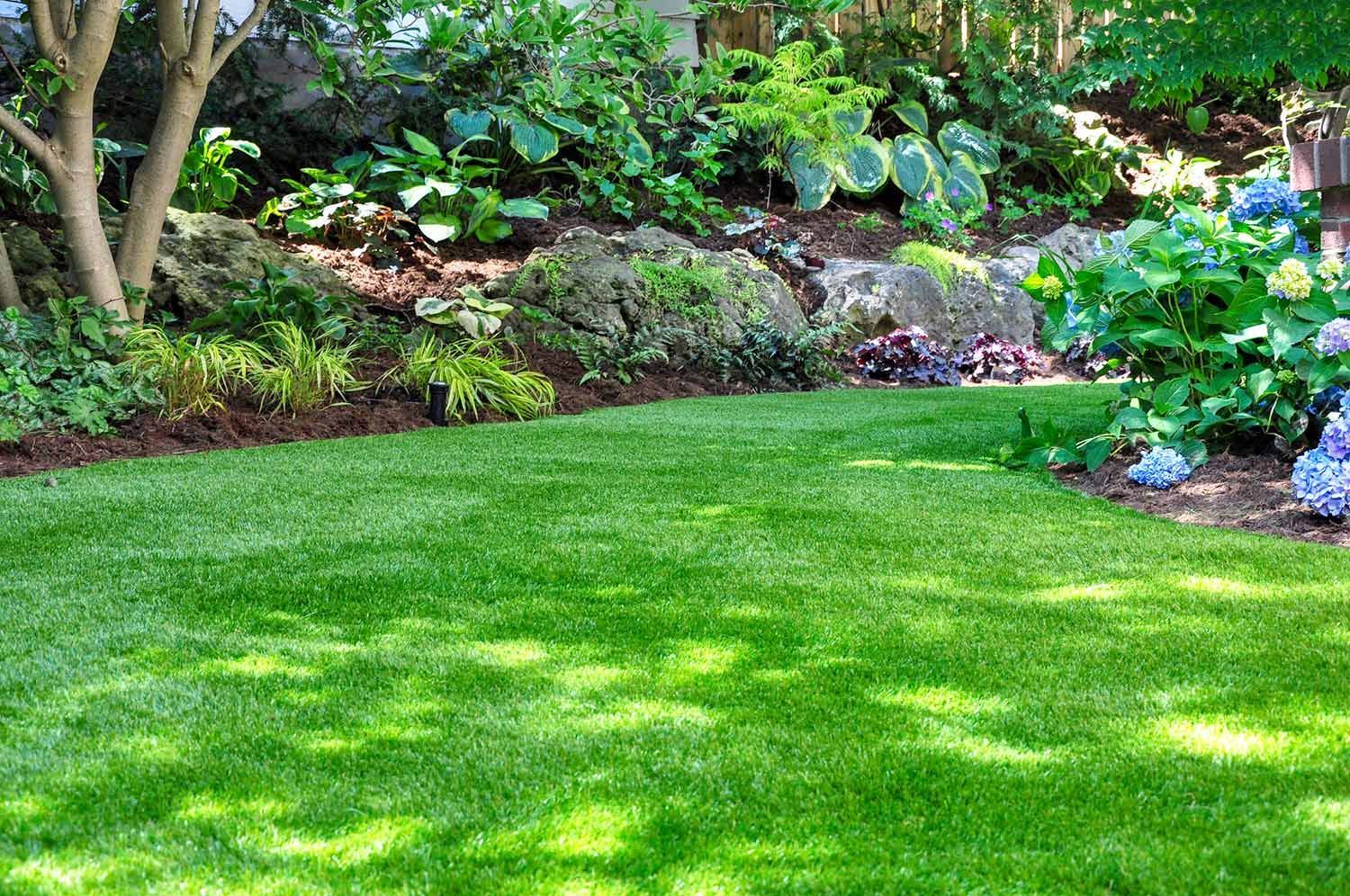
Living in Northern Illinois means experiencing the diverse beauty of all four seasons, each bringing its own set of challenges and opportunities for lawn care. In this blog post, we'll take you through a year-round guide on how to care for your lawn in every season, with insights and tips from the experts at Great-Greens. Embracing the Seasons: Northern Illinois is known for its distinct seasons, from the snowy landscapes of winter to the warm blossoms of spring and the lush greenery of summer. Great-Greens understands that each season requires a unique approach to lawn care. Discover the importance of seasonal fertilization, the dos and don'ts of winter lawn care, and how to prepare your turf for the vibrant blooms of spring. Local Insights for Year-Round Success: Our team at Great-Greens is well-acquainted with the nuances of Northern Illinois, and we bring this local knowledge to every lawn care strategy. Whether it's adapting to the challenges of a cold winter or ensuring your lawn thrives in the heat of summer, our year-round guide is designed to help you navigate the diverse climate of Northern Illinois and keep your lawn looking its best. Winter Resilience: Northern Illinois winters can be harsh, but with the right care, your lawn can emerge resilient and vibrant come spring. Learn about winter lawn protection, the benefits of strategic snow removal, and how to prepare your grass for the challenges of the frosty season. Great-Greens is here to guide you through winter and set the stage for a flourishing lawn in the warmer months. Spring Awakening: As the snow melts and spring arrives, it's time to rejuvenate your lawn. Explore our tips for spring fertilization, effective weed control, and proper aeration to kickstart the growing season. Great-Greens is committed to helping your lawn awaken with vitality and beauty after the winter slumber. Your Partner in Seasonal Success: Great-Greens is not just a lawn maintenance company; we're your partners in seasonal success. Whether you're navigating the snow-covered lawns of winter or basking in the summer sun, our year-round guide ensures that your lawn is well-prepared for every season Northern Illinois has to offer. Trust Great-Greens to be your guide to a healthy, vibrant lawn, no matter the weather.
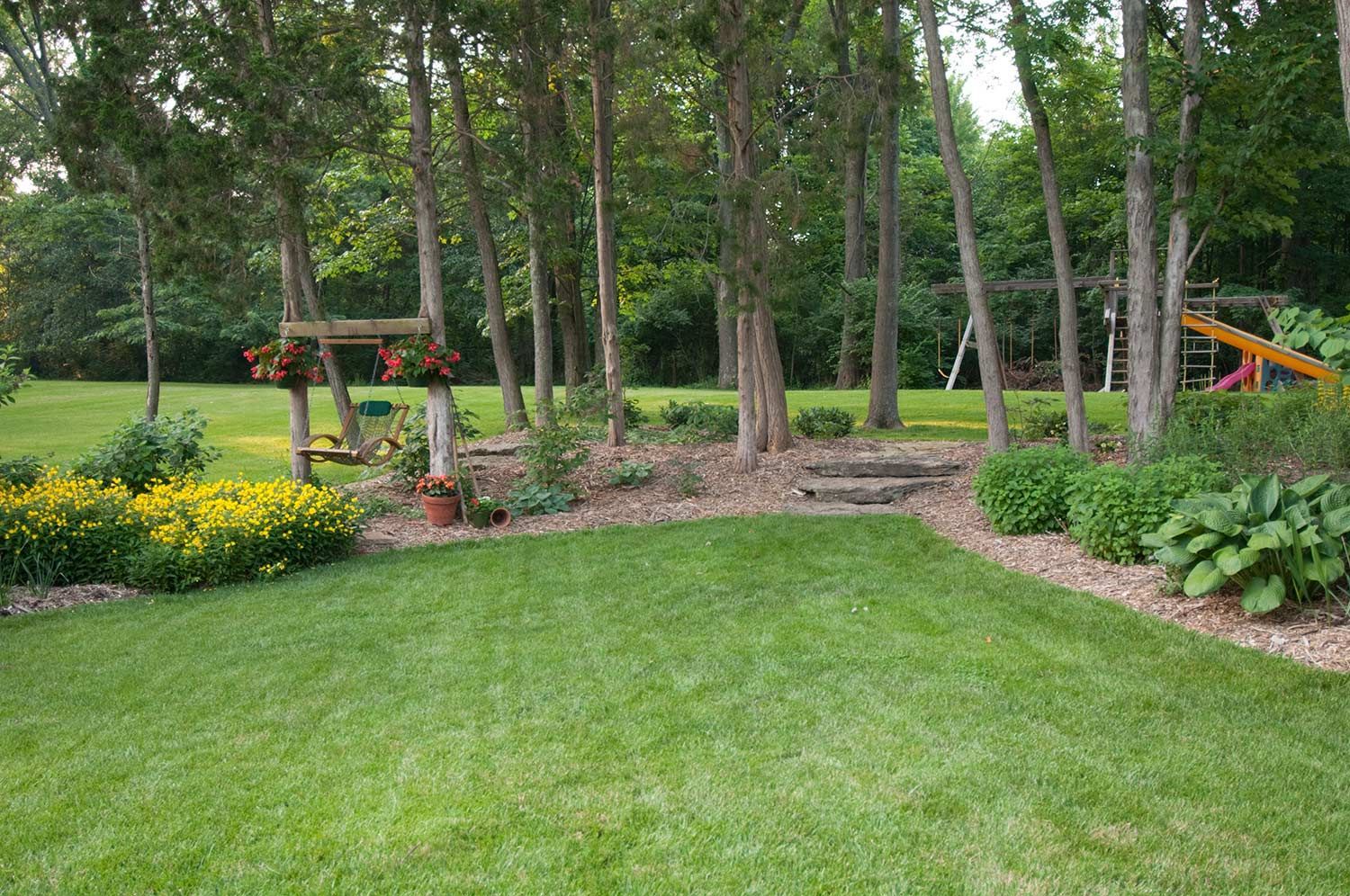
Welcome to the Great-Greens blog, where we dig deep into the intricate world of lawn care and unveil the scientific magic that turns neglected lawns into lush, vibrant landscapes. Today, we're pulling back the curtain on the expertise that sets Great-Greens apart in the realm of lawn maintenance. Understanding the Soil: The foundation of a healthy lawn begins with the soil beneath it. At Great-Greens, we conduct thorough soil analyses to understand its composition, nutrient levels, and pH balance. Armed with this knowledge, our expert team customizes fertilization plans to provide your lawn with the specific nutrients it needs to thrive. It's not just about making your lawn green; it's about ensuring it's the healthiest it can be. Weed Control Precision: Weeds are the unwanted guests that can quickly take over a lawn if left unchecked. Great-Greens employs precision weed control methods that target unwanted plants while preserving the health of your grass. Our experts identify the types of weeds plaguing your lawn and implement tailored strategies to eradicate them, ensuring your turf remains pristine and weed-free. The Art of Aeration: Aeration is a key practice in our arsenal, and it's more than just poking holes in the ground. It's a carefully orchestrated process that allows nutrients, water, and oxygen to penetrate the soil and reach the grassroots. Great-Greens' aeration techniques enhance soil structure, promote better drainage, and stimulate root growth, all contributing to a thicker, healthier lawn. Local Expertise, Lasting Results: Northern Illinois’ unique climate and soil conditions require a nuanced approach to lawn care. Great-Greens brings local expertise to the forefront, ensuring that our services are tailored to meet the specific needs of lawns in our community. Whether it's combating the challenges of a particular season or capitalizing on its advantages, our team is well-versed in the science of Northern Illinois lawn care. Join Us on the Green Journey: Transforming your lawn into a lush, green masterpiece is not just a service; it's a journey. At Great-Greens, we invite you to join us on this journey, where science meets expertise to create lawns that stand out in their health and beauty. Stay tuned for more insights into the world of lawn care and discover how Great-Greens can turn your outdoor space into a thriving haven.
Request a free quote, get information, or ask for professional advice – call our team at 815-846-4228.